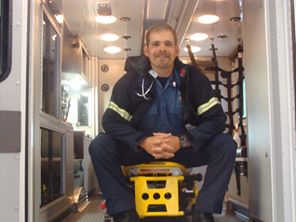So, You Want to Be an EMT?

If you have ever thought about what it might be like to be an EMT – Emergency Medical Technician or Wilderness EMT, then here is some food for thought. Happy chewing!
Emergency Medical Technicians and Wilderness EMT’s meet state and sometimes national standards for medical care of the sick and injured in “out of hospital” care settings. EMT’s meet the knowledge and skills standards to work on mobile ambulances. Often EMT’s work with other EMTs or advanced life support paramedics to care for persons in the field outside of the hospital. Along with paramedics, EMT’s provide care persons with life threats in the field, often making the decisions around patient transport options and final destinations. This is a big deal! Statistically, patients who receive immediate medical attention are much more likely to survive and recover from trauma, which makes every EMT a lifesaver.
The medical field of out of hospital care is constantly growing, you likely will not have a hard time finding work as an EMT. According to the Bureau of Labor Statistics, the average pay of an EMT (2019) is $32,620 and $40,460. EMT’s with specialized skills in firefighting or technical rescue often make higher salaries and are more sought after. The growth of this area of medical care is close to 23%, which is much higher than the average.
EMTs often find their work with public and private Emergency Medical Services (EMS) and Fire Departments. However, the US Forest Service, National Park Service, hospitals, private corporations, schools, sports events, adventure programs, expeditions also hire EMT and WEMT’s. These folks often work with equipment, materials and a partner in the field independent of supervisors in their daily routines.
The experience of successful patient management in a team setting often leads many to continue their education toward paramedic, nursing, physician assistant or medical doctor with a focus on emergency care. It could be said that this work and lifestyle have some “hooks” or “addiction”. Often EMTs report that their work in emergency medicine has become their lifestyle and part of who they are. This work has the potential to change the way you view other humans and the world.
Landmark Learning’s Emergency Medical Technician plus NOLS Wilderness Medicine Upgrade for Medical Professionals is taught in an intensive format over four weeks and includes clinical experiences on ambulances and emergency departments working with other EMT’s and paramedics. This format includes both North Carolina state certification as well as certification through the National Registry of EMT’s. Across three weeks, students are immersed in skills practice, scenario work and knowledge assessments through testing preparation. Students attend clinical rotations at the course end to use their skills and newfound knowledge in the field with real patients.
Students who attend the fourth week of our training are joined by current EMT’s, Paramedics, and other healthcare professionals for the NOLS Wilderness Upgrade for Medical Professionals. During this course, we apply and adapt our street skills for remote environments with an emphasis on improvisation and decision making. This mix of experienced providers with our new EMT’s serves as a professional mixer for our EMT students and provides “wilderness” specialty certification for our graduates.
Currently, Landmark Learning boasts a 98% course pass rate, and average a 95% pass rate on the first testing attempt with the North Carolina and National Registries. Our students use their certifications to fuel their outdoor careers and launch into the medical field. Since 1996 we have stayed in communication many of our students who have pursued the medical profession and excelled, with our training serving as base or catapult for their direction. #WEMT #EMT #Firefighter
